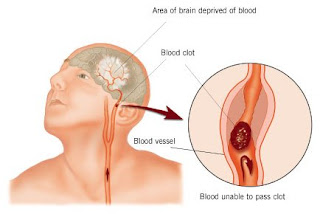Ephedra To Pump Your Adrenaline Up !
Ephedra refers to the plant Ephedra sinica. E. sinica, known in Chinese as ma huang (麻黃; pinyin: má huáng), has been used in traditional Chinese medicine for 5,000 years for the treatment of asthma and hay fever, as well as for the common cold. Several additional species belonging to the genus Ephedra have traditionally been used for a variety of medicinal purposes, and are a possible candidate for the Soma plant of Indo-Iranian religion. Native Americans and Mormon pioneers drank a tea brewed from an Ephedra, called Mormon Tea.
In recent years, the safety of ephedra-containing dietary supplements has been questioned by the United States Food and Drug Administration (FDA), the National Center for Complementary and Alternative Medicine, and the medical community as a result of a high rate of serious side effects and ephedra-related deaths. In response to accumulating evidence of adverse effects and deaths related to ephedra, the FDA banned the sale of ephedra-containing supplements on April 12, 2004. A suit by an ephedra manufacturer was upheld by a Federal District Court judge in Utah on April 14, 2005. The FDA appealed this ruling, and on August 17, 2006 the U.S. Court of Appeals for the Tenth Circuit upheld the FDA's ban of ephedra.As of June 2007, the sale of ephedra-containing dietary supplements remains illegal in the United States due to their health risks.
Effects and uses
Ephedra is both a stimulant and a thermogenic; its biological effects are due to its ephedrine and pseudoephedrine content. These compounds stimulate the brain, increase heart rate, constrict blood vessels (increasing blood pressure), and expand bronchial tubes (making breathing easier). Their thermogenic properties cause an increase in metabolism, evidenced by an increase in body heat.
In traditional Chinese herbology, E. sinica is included in many herbal formulas that treat cold and flu such as 麻黃湯 ma huang tang (ephedra decoction) or 麻杏石甘湯 ma xing shi gan tang (ephedra, apricot kernel, gypsum, and licorice decoction). Ephedra is used therapeutically as a diaphoretic to help expel exterior pathogens and regulate the proper functioning of the lungs.
Ephedra is widely used by athletes, despite a lack of evidence that it enhances athletic performance. Ephedra may also be used as a precursor in the illicit manufacture of methamphetamine.
Ephedra has also been used for weight loss, sometimes in combination with aspirin and caffeine. Some studies have shown that ephedra, when taken in a regulated and supervised environment, is effective for marginal short-term weight loss (0.9kg/month more than the placebo), although it is unclear whether such weight loss is maintained. However, several reports have documented the large number of adverse events attributable to unregulated ephedra supplements.
Side effects of ephedra may include severe skin reactions, irritability, nervousness, dizziness, trembling, headache, insomnia, profuse perspiration, dehydration, itchy scalp and skin, vomiting, hyperthermia, irregular heartbeat, seizures, heart attack, stroke, or death.
Use in sports
Ephedrine is listed as a banned substance by both the International Olympic Committee and the World Anti-Doping Agency. The U.S. National Football League banned players from using ephedra as a dietary supplement in 2001 after the death of Minnesota Vikings offensive tackle Korey Stringer; ephedra was found in Stringer's locker and was believed by some to have contributed to his death.The substance is also banned by the National Basketball Association. Nonetheless, ephedra remains widely used by athletes; a 2006 survey of collegiate hockey players found that nearly half had used ephedra in the belief it would enhance athletic performance.
Purity and dosage
There are no formal requirements for standardization or quality control of dietary supplements in the United States, and the dosage of effective ingredients in supplements may vary widely from brand to brand or batch to batch. Studies of ephedra supplements have found significant discrepancies between the labeled dose and the actual amount of ephedra in the product. Significant variation in ephedrine alkaloid levels, by as much as 10-fold, was seen even from lot to lot within the same brand.
Safety and regulatory actions in the United States
Escalating concerns regarding the safety of ephedra supplements led the FDA to ban the sale of ephedra-containing supplements in the United States in 2004. This ban was challenged by supplement manufacturers and initially overturned, but ultimately upheld.
info : wikipedia

















